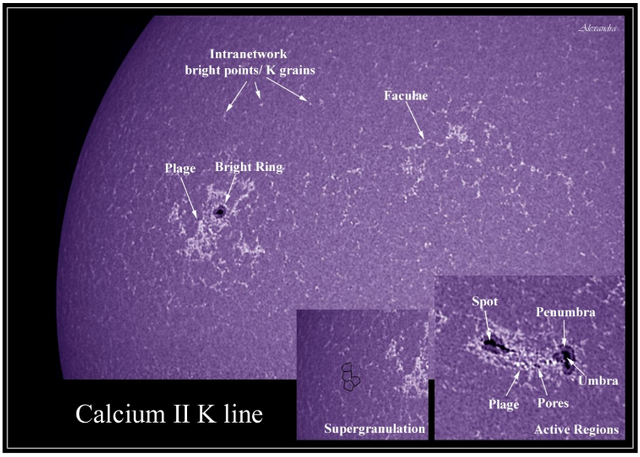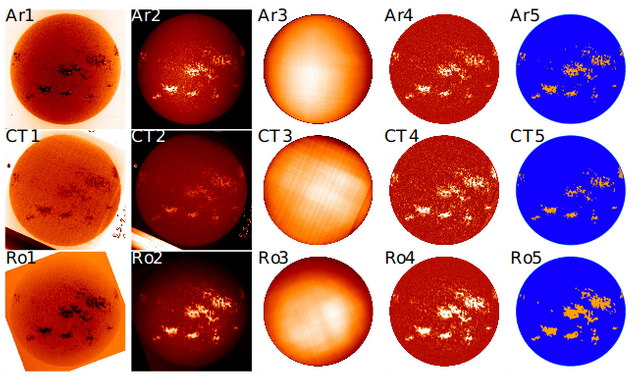Historical solar observations

We live in an era where both massive ground and space-based telescopes are capable of generating massive amounts of information nightly. This data can be stored, parsed, and analyzed using all of the most modern technology at our fingertips. However, there is a wealth of information that was collected in earlier times before the world was digitized and fully connected. Unearthing this data is a crucial endeavor because it may contain treasure troves of knowledge on objects whose objects are time dependent. One such example would be sunspots, whose appearance on the face of the sun follow a well known, but poorly understood 11 year cycle. I recently came across an interesting article from the Third Meeting of the Italian Solar and Heliospheric Community where astronomers digitized solar images from the archives of the Rome and Catania observatories.
The Rome observatory images were taken from 1964-1979 with a telescope equipped with a 35 mm camera and stored on film. The Catania observatory images were taken from 1907-1977 using a spectroheliograph and stored on photographic plates. In both cases, observations were made of the Ca II K spectral line. Astronomers often use filters such as hydrogren alpha or ionized calcium (Ca II K) when observing the sun that allows for detection of different features in different parts of the sun's atmosphere (see Figure 2 below).

The Ca II K line is sensitive to the magnetic field lines in the sun's atmosphere, so it is ideal for exploring the features associated with magnetic activity. Figure 1 above shows such features including faculae, plage, bright ring, sun spots, penumbra, umbra, pores, and supergranulation. In the case of this research, the astronomers were interested in if the plage regions from observations at the different observatories would match. The historical images from the aforementioned observatories were digitized around the year 2000 by scanning them as JPGs or GIFs. In this study, the images were converted to the format appropriate for astronomical processing: FITS.. The images were then cleaned up, processed, and compared with observations taken with another spectroheliograph at Arcetri. An example of the image processing and comparison is shown below in Figure 3.

There were some problems with the digitization process that led to saturation of the plage regions, but overall the researchers found good agreement between the Arcetri and Rome observations despite the difference in resolution between the two instruments. The researchers suggest that further digitization of such records would be very useful in filling the gaps in our knowledge regarding transient phenomena in the solar atmosphere.
References
Chatzistergos, T. et al., 2019, https://arxiv.org/pdf/1902.07483.pdf
This post has been voted on by the SteemSTEM curation team and voting trail in collaboration with @utopian-io and @curie.
If you appreciate the work we are doing then consider voting all three projects for witness by selecting stem.witness, utopian-io and curie!
For additional information please join us on the SteemSTEM discord and to get to know the rest of the community!
Congratulations @ptsouth97! You have completed the following achievement on the Steem blockchain and have been rewarded with new badge(s) :
Click here to view your Board
If you no longer want to receive notifications, reply to this comment with the word
STOPTo support your work, I also upvoted your post!
Hi @ptsouth97!
Your post was upvoted by Utopian.io in cooperation with @steemstem - supporting knowledge, innovation and technological advancement on the Steem Blockchain.
Contribute to Open Source with utopian.io
Learn how to contribute on our website and join the new open source economy.
Want to chat? Join the Utopian Community on Discord https://discord.gg/h52nFrV